-
Posts
1,006 -
Joined
-
Last visited
-
Days Won
13
Content Type
Profiles
Forums
Gallery
Downloads
Blogs
Events
Store
Aircraft
Resources
Tutorials
Articles
Classifieds
Movies
Books
Community Map
Quizzes
Posts posted by Roundsounds
-
-
The golden rule in any aircraft fitted with flash automation, if it’s not doing as expected get rid of the automation. Once you’ve sorted things out and established in a safe state, then consider whether further use of automation is the best course of action. This applies to automated trim functions, the B737 has a published procedure to disable the automated trim function and revert to manual trim. The initial steps in this procedure are accomplished from memory.
Boeing have not designed a system that will fly the aeroplane into the ground. “System” includes both aircraft systems and crew intervention.
-
 1
1
-
-
Stalls
in Aerobatics
The root of the problem with stalling skills sits squarely with instructor / examiner training and attitudes. Having had the opportunity to fly with a large number of instructors providing them with tailwheel endorsements, I find their level of knowledge and skill to be appalling. I always include upper air general handling as part of the type training before starting the takeoff / landing elements. Often the type used for the tailwheel training exhibits strong adverse yaw tendencies, much greater than the types they have previously flown. I have the trainee complete some coordination exercises to familiarise them with the control inputs required to maintain balance rolling into and out of turns. This often provides me with concern, then there’s the stalling exercises. A large proportion of these instructors become anxious at the thought of straight and level stalling, let alone slipping, skidding or power on stalls. The simulated skidding turn into final is the eye opener for most. I like to think some of these instructors take away some improved knowledge and seek further training around stalling.
-
 4
4
-
 1
1
-
-
You are correct, if this is an MCAS related problem, the crew will need to be trained and competent in performing Boeing’s published procedures.This is a disaster for Boeing. It raises serious issues about the re-engining of the 737. It may require more than merely re-writing the pilot's manual.This is most likely an issue for the training providers, including recurrent training not just the initial type rating. It seems the second last crew to operate the aircraft involved in the Lion Air accident were able to deal with the problem. The problem appears to have been caused by a maintenance issue and not a manufacturers design issue. Whether the crew know what may have caused the fault will have no effect on how they deal with it. Boeing have a published procedure to deal with the Lion Air problem.
-
And Badgery’s it should be!!
some of the facts in this article aren’t correct, but there’s no disputing Del Badgery was an Australian Aviation Pioneer. Badgerys Creek was named after him.
-
Anyone have details on this incident?
https://www.nbnnews.com.au/2019/03/04/light-plane-crashes-near-cessnock-airport/
-
It’s pretty hard trying to get tiedowns to stop the Cub blowing away at any location, let alone a beach!"Any beach" -
I’ve got a Piper J3 Cub, happy with 400m with clear approaches.
-
You could very easily raise a valid argument that operating in CTR / CTA could be safer than Class G. Alternatively you could argue the authorities are saying it’s more dangerous to operate in controlled airspace. Albury / Wagga are interesting cases. Albury has a tower due RPT ops. RPC holder cannot operate at Albury when the tower is active, yet they can when the tower closes. If the argument is about RPT movements being limited to tower hours consider Wagga. Wagga has RPT ops, no tower yet RPC operations permitted.Once you get your RPC I think now you can fly the school aircraft in Class D & C as a first part of RA trying to gain access to controlled airspace. At present class C & D change to class G or E when the tower closes. Coffs Harbour is like this, it changes from C to G. I did my PPL conversion there. My PPl is no longer current so I can only legally fly there now after Tower hours.Motor gliders can be flown in CTA / CTR by the holder of a GFA equivalent of an RPC with no limitations. It’s all very inconsistent and not safety based.
-
 1
1
-
-
It’s been temporarily closed for upgrades for nearly 12 months.Jaspers Brush? -
Hi, is anyone aware of any available airfields on the NSW South Coast between Wollongong and Moruya? I’m particularly interested in coastal near Nowra.
-
-
-
You got the Luton Major!! The one in the foreground is a Stitts Payboy. I watched both of these aircraft during finally assembly at Camden when I was a young hangar rat. Managed to go for a ride in both, later in life I did a flight review for one of the Luton’s owners and had a fly of it - very Tiger Moth like to fly.
-
I sat in the backseat on a number of flights in the Horizon when I was a young lad, the gear and flap were operated by a single handle. Gear and flap were wound either up or down, you could not separate their operation. If you ever see one departing you can tell when the pilot has started retracting the gear by the pitching/rolling induced by the pilot while he winds the gear/flap up.Roundsounds plane is a GY-80 Gardan Horizon, as djpacro said.[ATTACH]38577[/ATTACH] -
-
-
-
There have been a number of Tigers suffer engine failures as the result of the prorective coating on the cork float in the carburettor cracking. The crack allows fuel to enter the cork, as the engine warms it causes the coating to expand and can make the float stick and lead to a rich or lean situation. Very hard to identify if the aircraft has caught fire. There is a well documented accident in Qld explaining this fault, It would be very easy to attribute this type of failure to carb ice.
-
 1
1
-
-
There have been a number of Tigers suffer engine failures as the result of the prorective coating on the cork float in the carburettor cracking. The crack allows fuel to enter the cork, as the engine warms it causes the coating to expand and can make the float stick and lead to a rich or lean situation. Very hard to identify if the aircraft has caught fire. There is a well documented accident in WA explaining this fault, I’ll try to find the report. It would be very easy to attribute this type of failure to carb ice.
The WA accident report says it is a know fault observed by people performing overhauls, yet no AD issued. I will not fly Tigers any longer as a result, the last endorsement I knocked back had an unexplained engine failure on takeoff resulting in an off field landing and damage.
-
 1
1
-
-
This is actually a very poor video for the following reasons:
- he introduces the PARE spin recovery technique before commencing the demos, but never mentions the A (aileron) during any of the recoveries. If you enter a spin and not centre the ailerons you will likely not recover (aircraft type dependent).
- he continually refers to airspeed being the primary factor in stalling - it’s angle of attack, you can stall / spin from any airspeed.
- he introduces a non standard method of using roll to identify which rudder to apply during spin recovery. This will kill you if you try this method with inverted spinning. The only way to reliably identify the direction of rotation is yaw, best way is to sight down the nose of the aircraft. I agree that looking at the balance ball is unrealistic unless in IMC.
- he never mentions removing the opposite rudder when the spin rotation stops. Leaving full rudder in will cause some aircraft to spin in the opposite direction, some will flick into an inverted spin if you also hold the forward stick in too. The Yak 52 being a great example.
If you’re going to produce a training video on a topic it must be done correctly. In this case give the full recovery method and apply all steps through to established back in the climb. It is very difficult to retrain people who have been taught incorrect techniques, teach the correct ones from the outset.
In summary;
- it’s angle of attack not airspeed leading to stall / spins.
- Use all steps of an acceptable procedure every time, especially when instructing.
- don’t try to make up your own recovery tips without thinking them through and doing some research. (Using roll to identify which rudder to use)
On the positive side, I agree with his scenario based entry method by simulating an overshoot onto final.
-
 1
1
-
-
Ask your instructor to provide you with a copy of the syllabus, this includes theory knowledge and exams.
-
Maybe ELAAA, SAAA and AOPA could form a partnership of some sort? That’d sort out the level playing field issues AOPA have with RAA.
What could possibly go wrong...
-
 1
1
-
-
going places in a Yak 52 will be a pain. They hold 120 litres, use 12 for warmup / takeoff the burn about 60 litres per hour, which provides and endurance of 108 mins. Take your 30 mins off that and you’re left with 78 mins @ say 120 kts nil wind. Allow 10 mins for approach and you’ve got about 135 NM range nil wind. I’ve landed many times with both 12 litres lights flashing, which would mean under the new rules I’d need to call a Fuel Mayday.
I don’t know if any Yak 52s having suffered from fuel exhaustion. Yak pilots are aware of the limitations and plan accordingly.
-
 1
1
-
-
Whatever you do don’t tell them your gauges aren’t accurate. Just make up something and keep it in a folder undated.I used to run on 45 min reserve and will still do that. 30 mins doesn't allow for much if you are flight planning down to that close a figure.Don't know how I will be able to calculate fuel remaining in flight with great accuracy. My fuel gauges are not very accurate so I just keep a time and consumption figure.If you’re doing local operations or training, 30 mins is plenty for reserves.


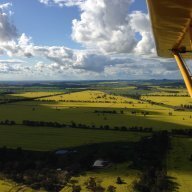
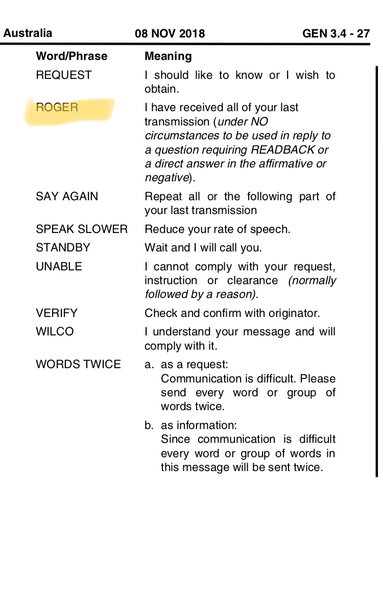
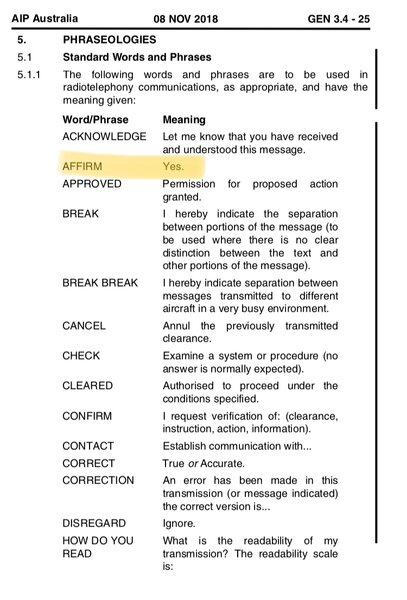
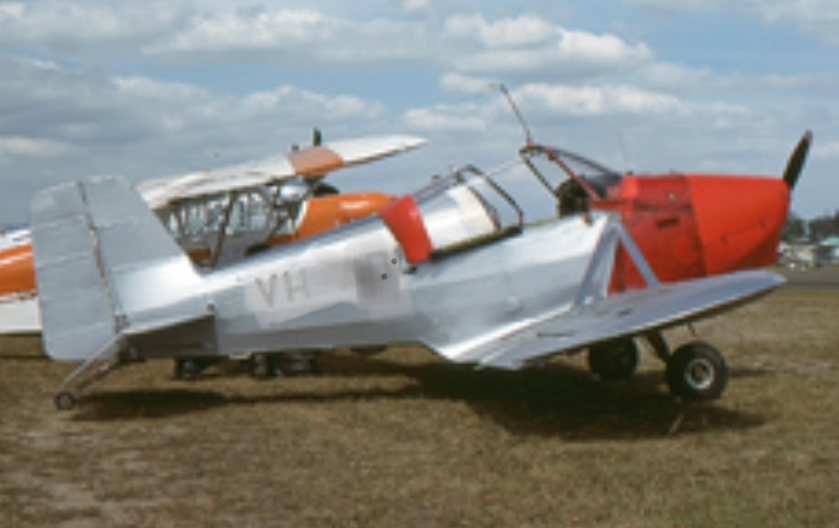
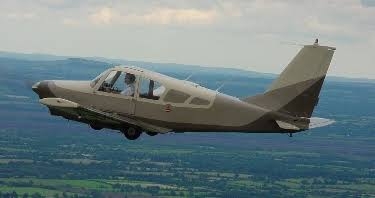
CASA booklet
in AUS/NZ General Discussion
Posted
On the flip side, people routinely make broadcasts turning onto every leg of the circuit, inbound, over head, joining circuit and clear of runway, irrespective of the level of traffic. When there are half a dozen aircraft on CTAF (and throw in a handful of acknowlegdements to the broadcasts) this leads to:
- radio congestion
- reduced situational awareness (with each transmission you redraw the mental picture)
I have no issues with additional broadcasts or aircraft to aircraft calls to coordinate separation, but routinely making unnecessary broadcasts based on the principle of “the more you talk the safer you’ll be” is simply wrong. By limiting routine calls to those recommended, you are leaving RT space for critical calls.